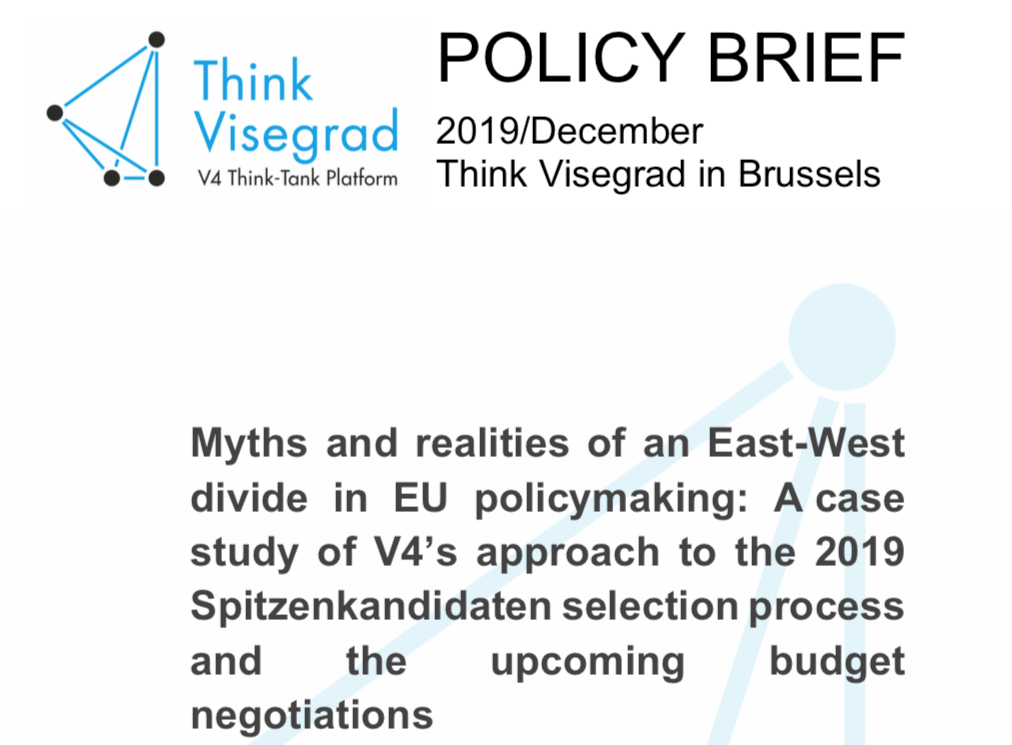Myths and realities of an East-West divide in EU policymaking: A case study of V4’s approach to the 2019 Spitzenkandidaten selection process
Zuzana Podracká published a policy paper as a part of Think Visegrad platform, in which she focused on the V4’s approach to the 2019 Spitzenkandidaten selection process.
20. December 2019

- The rhetoric of divide(s) has been a constant underlying feature of the European Union discussions since the first wave of eastward enlargement of the Union in 2004. When the former Soviet bloc countries first became part of the European family, they metaphorically and literally sat at the back listening, defined by their status as new members. The expectation was that these countries would adjust their behaviour according to the leadership of the old EU core. Fifteen years on, the dynamics has shifted from the old vs. new member states to an apparently omnipresent East-West divide. Central and Eastern European member states have been gaining confidence and adopting a rather strong, arguably contrarian, stance on some of the key issues that will define the future of the Union. Regardless of that framework, the rhetoric of ‘us vs. Brussels‘ has certainly remained a constant feature of the way EU matters are presented by political leaders on a national level. Having interviewed researchers and advisors from the European Parliament, the European Commission and Brussels- based think tanks, this paper will look at the 2019 Spitzenkandidaten selection process and the next EU budget negotiations to determine the extent of the East-West divide by looking at whether the V4 countries have become constructive players on the European Union level of policymaking.
One more conclusion has been drawn across the political and non-governmental spectrum – the East-West divide does not have to remain a source of inequality of approach, perceived or real, however comfortable it might be to use that rhetoric to win political points at home. It can instead become a basis for broader coalitions on issues that the V4 cares about and is in a unique position to bring constructive proposals forward.





